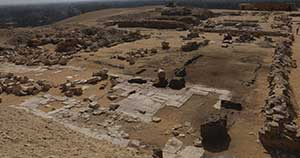A new pyramid at Saqqara of Queen Setibhor
The team also investigated a pyramid located beside that of Djedkare Isesi, finding that it belonged to a queen named Setibhor. An inscription found on a column within the pyramid reads:"The one who sees Horus and Seth, the great one of the hetes sceptre, the great of praise, king's wife, his beloved Setibhor".


The large size of the pyramid complex of queen Setibhor and her title of queen's wife indicate perhaps her direct intervention in helping her husband, king Djedkare, ascend the throne of Egypt at the end of the 5th Dynasty.
Comments
Post a Comment